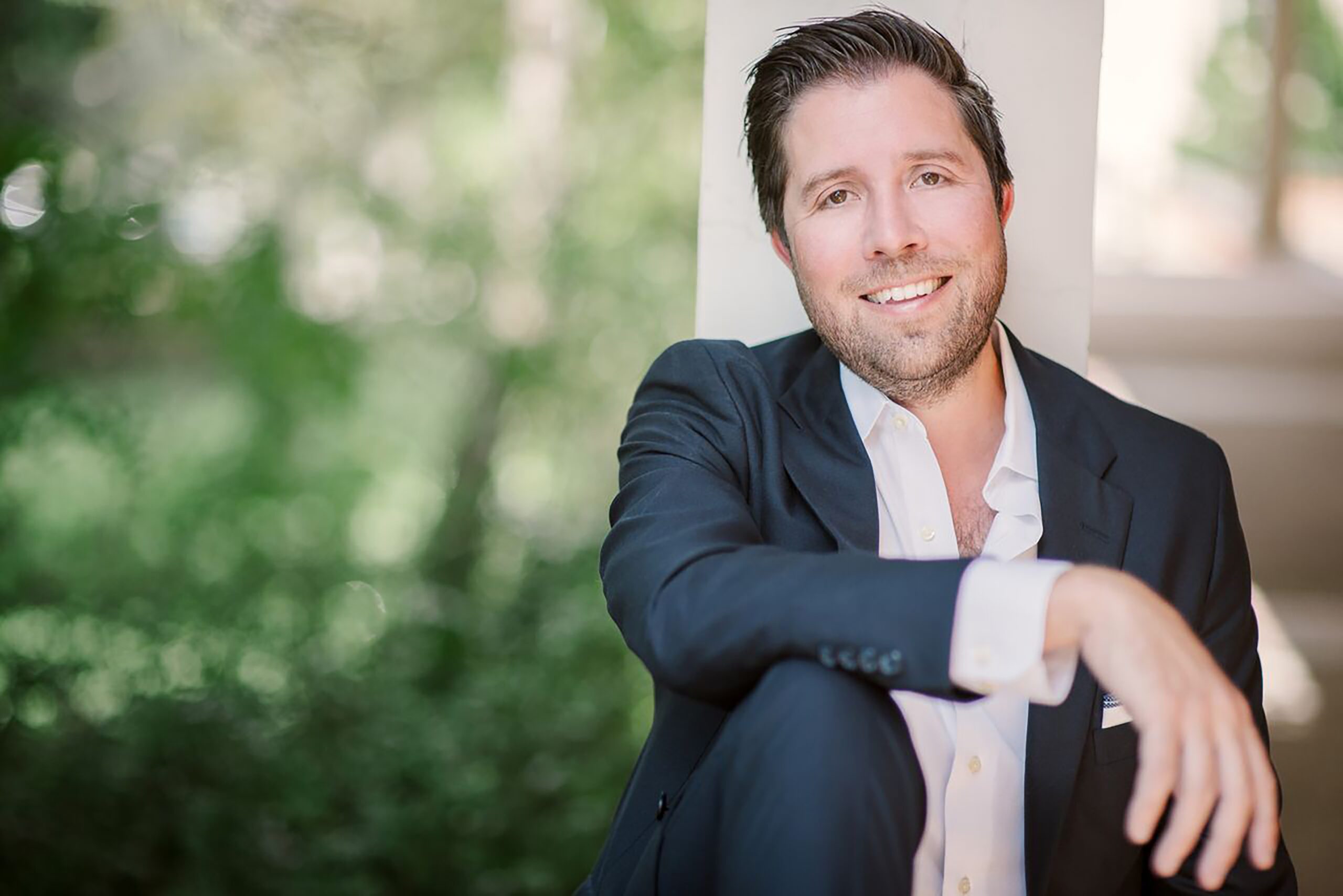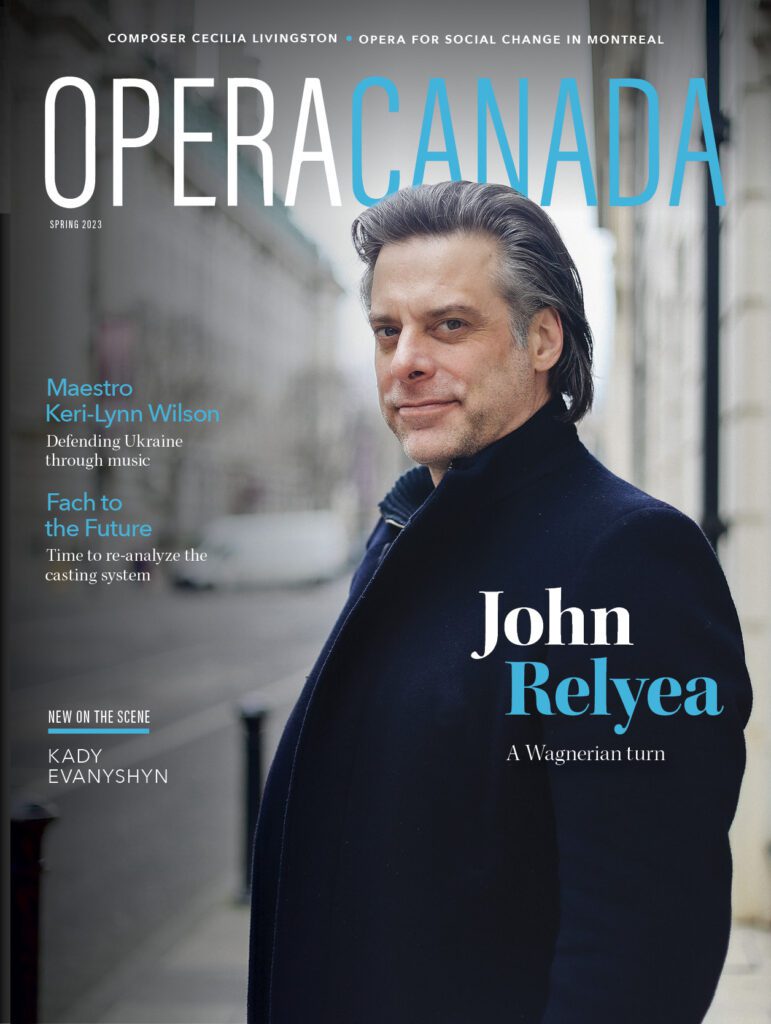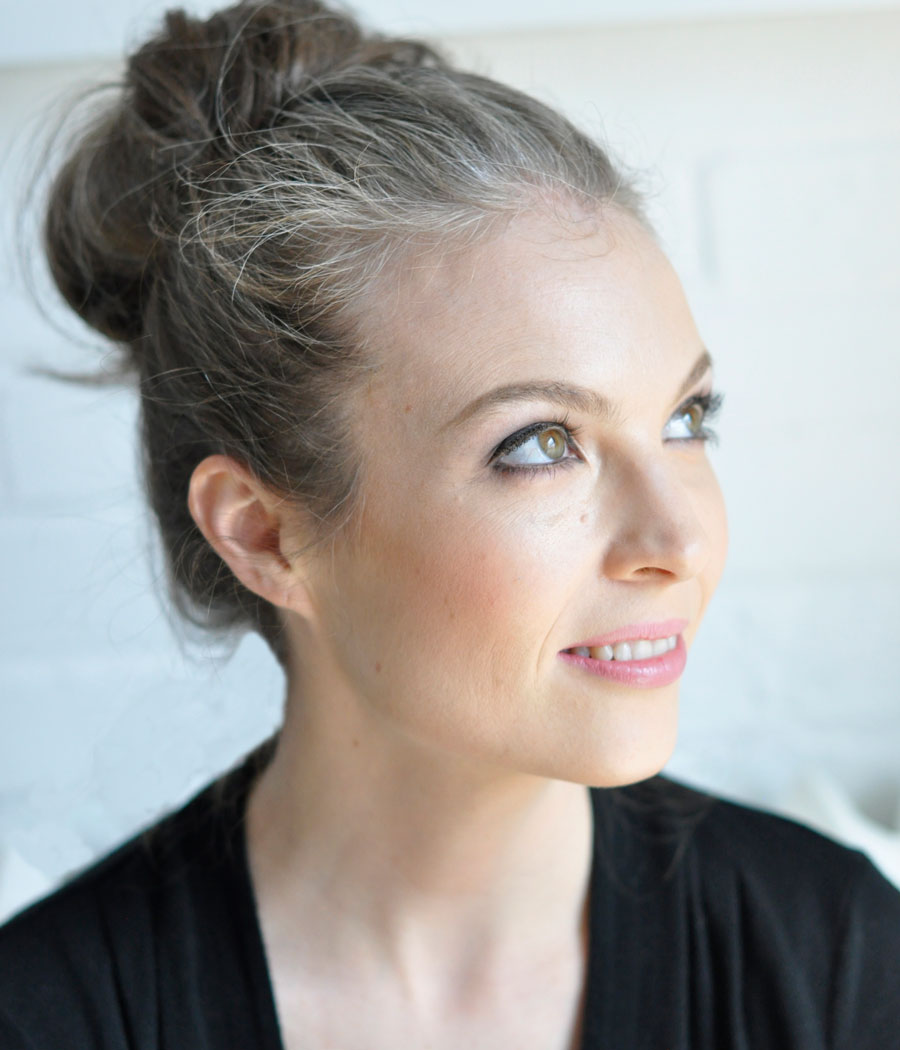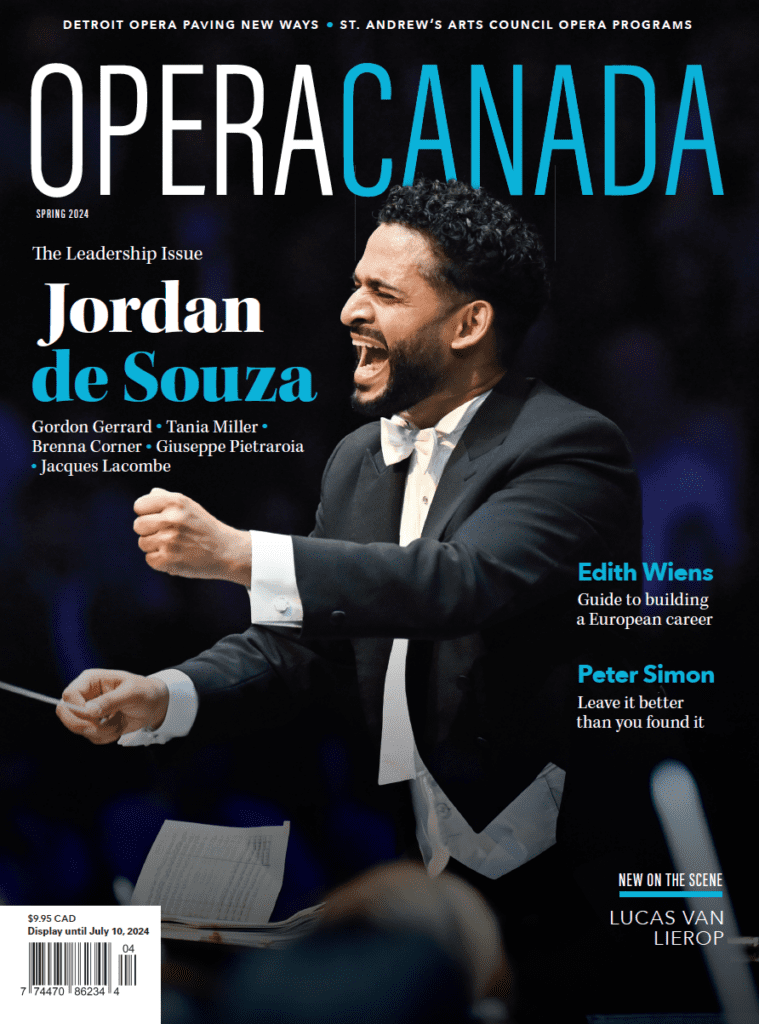Timothy Myers, Principal Conductor and Music Director of Austin Opera, host of the Listening on Purpose podcast, and recent graduate of Harvard Business School (HBS) talks innovation.
EB: What does innovation look like in our industry?
TM: First, innovation is frequently used as a buzz word, to be sure we’re embarking from a singular point let’s define it. Disruptive Innovation, a term coined by HBS professor Clay Christensen as “the phenomenon by which an innovation transforms an existing market or sector…eventually completely redefining the industry.” A classic case study of Disruptive Innovation is Netflix vs. Blockbuster. However, another HBS professor, Dr. Linda Hill, defines innovation as “something that is both new and useful” to your organization. Obviously those are very different ways of thinking about innovation, but both of these eminent professors and their distinguished colleagues ask a common question: how do we make innovation repeatable?
For me, the most useful lens lies somewhere between: it seems a bit of a stretch to transition your technology to a better user experience for the audience member—stream something, program something a bit off the beaten path, etc.—and call that innovation. While you might be decreasing friction points or increasing access, you are most likely adopting an idea or technology already in use by others for many years.
In John Adams’s Doctor Atomic, the character Robert Oppenheimer utilizes the famous Henry Ford adage as a retort to another character: “If I had asked people what they wanted, they would have said faster horses.” While we don’t know for sure that Henry Ford actually said this, the adage is a good starting point for how to frame innovation as it could look in opera and the performing arts.
EB: Of course, the ultimate goal of innovation in our industry is to connect with and build our audience base. What do you think about that?
In John Adams’s Doctor Atomic, the character Robert Oppenheimer utilizes the famous Henry Ford adage as a retort to another character: “If I had asked people what they wanted, they would have said faster horses.” While we don’t know for sure that Henry Ford actually said this, the adage is a good starting point for how to frame innovation as it could look in opera and the performing arts.
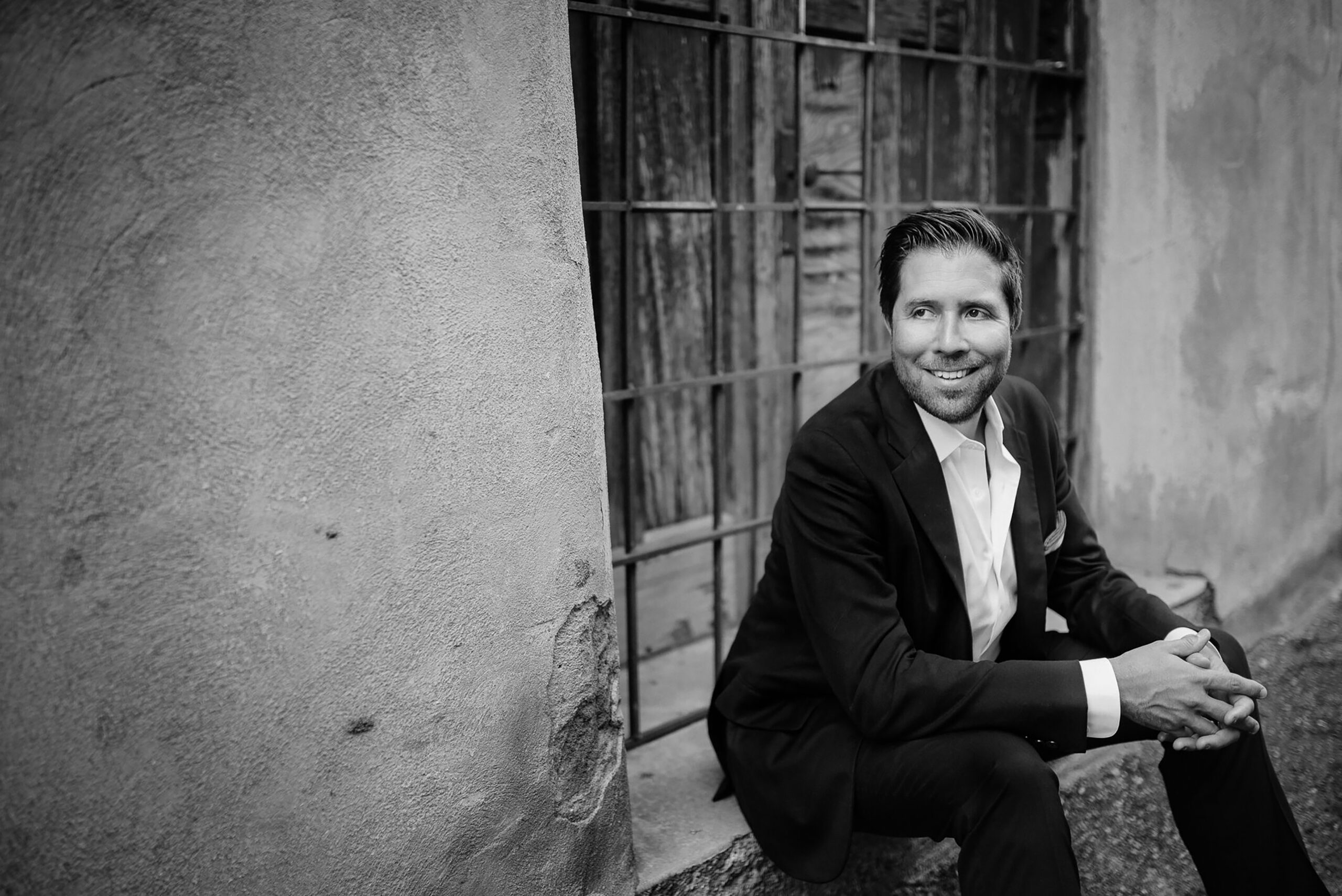
Ⓒ Simon Pauly
EB: Of course, the ultimate goal of innovation in our industry is to connect with and build our audience base. What do you think about that?
TM: One of the things we know for sure is that in order for the arts to thrive we have to become more customer-centric. This manifests itself in a variety of ways, but it certainly demands that we finally stop flogging the horse of “build it and they will come.” Even before the COVID-19 pandemic our audiences were slowly slipping, which in our case typically means our donor-base, too. It’s foolhardy to believe that if we simply produce the best performances, the audience will materialize.
Another framework of Dr. Christensen, the Jobs-to-be-Done theory, is useful for thinking about audience engagement. While it might be hard to admit, especially for a pathological optimist like me, not everyone coming/interested in attending a performance is coming to hear the most virtuosic, definitive performance of a work, values which are also subjective. Are there some connoisseurs who know a brilliant portrayal of the title role in Tosca when they see and hear it? Yes, thankfully, there are. However, assuming that, that is enough to satisfy the connoisseur, it doesn’t necessarily account for what is often a large portion of, if not the majority, of the audience.
It’s been interesting to examine data gathered by the global Advisory Board for the Arts (ABA) on this topic. While you or I might be hoping for a compellingly stylistic performance, others might be there simply to try something new, impress a date, dress up and get out of the house, or simply to enjoy an event in community. Until we’re considering all of these elements and harnessing the data available to us, it will be difficult to craft a sustainable future for the arts in a world that’s increasingly full of distraction— especially in North America.

EB: What are 3 key things you’ve learned during your time at HBS that you’d like to see more widely implemented in our industry?
TM: 1. Use better data points. Be sure we’re asking the right questions. For example, it’s relatively straightforward to gather data from those already attending performances, but that’s also a tiny fraction of the market. How can we target those who are not attending? It’s much more complex to do, but data tells us that the average age of those consuming classical music via a streaming service is younger and larger than the audience coming to the concert hall or opera house. Why is that? How do we solve for that problem?
2. Create immersive seamless audience experiences. We need to consider the full experience from ticket purchase, to entering the venue, to leaving the event.
3. Give the artists a voice. This isn’t particularly something I learned at HBS, but I now know better how to language it: we need to put power in the hands of the artists, specifically in regards to content.
EB: Has the role of the Music Director shifted in our transforming paradigm?
TM: Being a Music Director now is an increasingly challenging and multi-faceted endeavour. What became clear to me at the beginning of the pandemic was that a sustainable future will require innovation from across the organization. Because I wasn’t always on a plane or in a rehearsal room somewhere else, my relationship with Austin Opera deepened in a very beautiful way during the pandemic. One of the two key aspects of my application to HBS was my belief that as a Music Director I needed to broaden the scope and depth of my knowledge so that I can be the highest-level contributor possible.
My belief is that—especially right now—what a Music Director is able to contribute to the organization off the podium is more important than ever. Most Music Directors have long understood off the podium involvement to be most closely tied to fundraising and education, but my goal is to be an essential part of conversations about innovation, new models, etc., things that contribute to the paradigm shift that’s required for a sustainable future.
EB: What are important questions or precepts that govern your programming decisions?
TM: My insatiable curiosity has meant that for a long time I’ve had a predilection for lesser-known repertoire, and not necessarily just in the “contemporary” vein, and I believe many in the audience feel similarly. Programming symphonic concerts tends to be quite a different endeavour, but in looking at an opera season there’s a bit of a Venn diagram for me. Of course, programming is always a team sport with various players having different aspects in mind, but for me I think a lot about these: Is there a big ‘why’ around doing the piece?
Maybe it’s a world premiere, or maybe standard rep but in an exciting new production, or a particularly special cast. Does it challenge those involved? Oftentimes these challenges come with the bigger repertoire, but not always. In my experience there’s always something a little extra special when performers are pushed outside of the “we’ve done this one a bunch before” box. Is it something that indicates the direction an organization is going? No matter the size of organization it’s important to have an identity that can be distinguished from the outside.
EB: Can you tell me about something that has surprised you in your pursuit of audience-building at Austin Opera?
TM: Early on in the pandemic, the team at Austin Opera doubled-down on some priorities put forth by our indomitable General Director & CEO, Annie Burridge. One, that we are in service to the art form and, two, that we are in service to the community. That meant that the conversation shifted from “how are we going to do this?” to “we are getting this done.”
With these commitments as beacons we pursued innovative ways to serve both the art form (which includes the artists!) and the community. We filmed an All-Star Concert special for PBS with the full orchestra and stars like Isabel Leonard and Ryan Speedo Green, that has since been seen in over 115 markets to a total possible viewership of more than 130 million people. Every company in the world introduced digital content, but we also screened everything in drive-in movie theatre venues. Our team built mobile projection kits so patrons could host neighborhood watch parties in their yards. These things allowed people to retain some of the communal experience that makes our art form so special.
In May of 2021 we were one of the first companies in North America to return to live performance when we produced Tosca (with Latonia Moore in the title role) at Circuit of the Americas—at the time the only purpose-built Formula One speedway in North America— where we could socially distance an audience of up to 3,000. This would have already been memorable, but was made extra so when our opening night was greeted with rain and wind. Of course, the orchestra couldn’t come out as rain was blowing onto the stage, but with the agreement of all the artists we proceeded with the show, me conducting our rehearsal pianist playing a synthesizer.
It had been 13 months since I had conducted in front of a live audience and, remarkably, almost everyone stayed for the entire evening. When we reached the end of Cavaradossi’s Act I aria “Recondita armonia”—the first time in the piece the audience has an opportunity to applaud—the reaction was vociferous. In that moment, overcome by emotion, my entire being remembered “that’s why we do this, for the art form and for them.”

